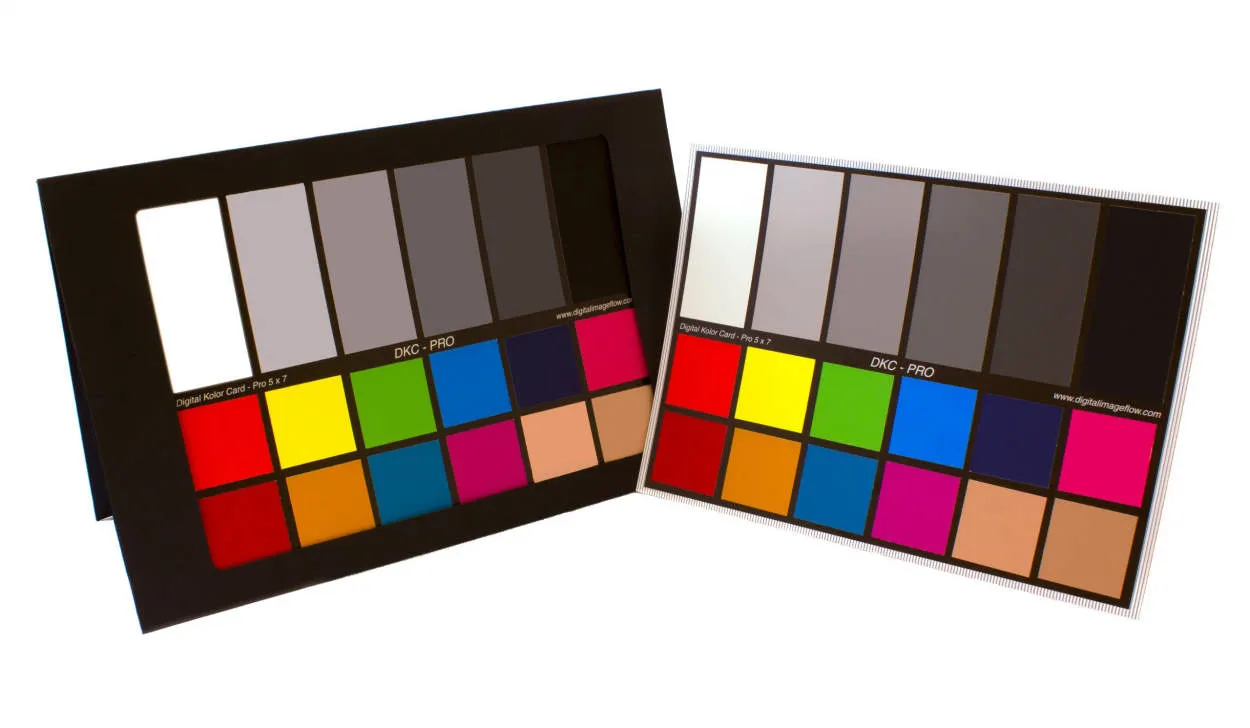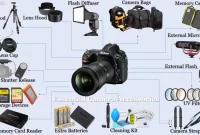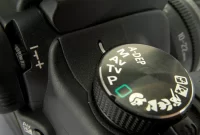When it comes to selecting a camera, finding the perfect balance between price and performance is essential. With numerous options available in the market, it can be overwhelming to make a choice that meets your needs and fits your budget. In this article, we will explore the factors to consider when balancing price and performance in camera selection.
Understanding the Relationship between Price and Camera Performance
In the world of photography, the selection of a camera involves finding the right balance between price and performance. Choosing a camera solely based on its price may not guarantee the desired performance, while opting for the most expensive model may not always be necessary. To make an informed decision, it is essential to understand the relationship between price and camera performance.
Price as an Indicator of Features
Generally, a higher price tag indicates a camera with advanced features and capabilities. High-end cameras often come equipped with larger sensors, better image processors, and enhanced autofocus systems. These features contribute to improved image quality, low-light performance, and faster shooting speeds.
On the other hand, budget-friendly cameras may lack some of these advanced features but can still produce impressive results. They are suitable for beginners or enthusiasts who prioritize affordability over the latest technology.
Performance Considerations
While price can serve as an indicator, it is important to evaluate the specific performance needs before making a purchase. Professional photographers and those who require superior image quality and advanced functionalities will benefit from investing in higher-end cameras.
For casual photographers or those starting their photography journey, mid-range or entry-level cameras often offer more than enough capabilities to capture stunning images. These cameras provide a great balance between price and performance and enable photographers to grow their skills without breaking the bank.
Additional Factors
When considering the relationship between price and camera performance, it is crucial to take other factors into account as well. These include lens selection, compatibility with accessories, user-friendliness, and overall system versatility.
Some camera brands offer a vast selection of lenses, catering to various photography genres. Others may offer a limited range, which can impact the flexibility of the system. Additionally, the availability of accessories such as external flashes, battery grips, or remote triggers can enhance the photographic experience.
Conclusion
The relationship between price and camera performance is complex, and it is vital for photographers to understand their specific requirements before making a decision. By carefully evaluating the features, performance considerations, and additional factors, one can strike the right balance between price and performance in camera selection.
Factors to Consider When Choosing a Camera within Your Budget
When it comes to selecting a camera that fits your budget, there are several factors to consider. Balancing price and performance is crucial to ensure you make a wise investment. Here are some key points to keep in mind:
-
Image Quality:
One of the most important factors is the camera’s image quality. Look for high-resolution sensors and good low-light performance. This will ensure that your photos come out sharp and vibrant, even in challenging conditions.
-
Camera Type:
There are various camera types available, such as DSLR, mirrorless, and compact cameras. Each has its own advantages and limitations. Consider your photography needs and preferences to determine which type suits you best.
-
Lens Compatibility:
If you plan to expand your photography skills in the future, consider the lens compatibility of the camera. Interchangeable lens systems offer versatility and allow you to experiment with different focal lengths and shooting styles.
-
Features and Controls:
Check for features that align with your shooting requirements. Look for manual controls, autofocus capabilities, built-in image stabilization, and creative modes. These features will enhance your overall photography experience.
-
Budget and Value:
Set a budget and determine the value you expect from your camera. Research and compare prices, read reviews, and consider the overall package including warranty, accessories, and customer support. Strike a balance between affordability and quality.
-
Size and Portability:
Consider the size and portability of the camera. If you plan to carry it around frequently, a compact and lightweight option might be more suitable. However, larger cameras often offer more advanced features and better ergonomics.
By taking these factors into account, you can make an informed decision when choosing a camera that fits your budget. Remember, it’s essential to find the right balance between price and performance to ensure you get the most out of your photography equipment.
Comparing Specs: Finding the Sweet Spot for Price and Features
In the world of camera selection, striking the right balance between price and performance is crucial. With a plethora of options available, it can be overwhelming to identify the perfect camera that meets your needs without breaking the bank. Here are some key factors to consider when comparing specifications.
1. Sensor Size
The sensor size has a significant impact on image quality. A larger sensor tends to capture more light, resulting in better low-light performance and dynamic range. However, cameras with larger sensors often come at a higher price point.
2. Megapixel Count
Megapixel count determines the resolution of the images. Higher megapixels provide sharper details and allow for larger prints. It is essential to strike the right balance as excessively high megapixels may not always translate into better image quality.
3. Lens Selection
The lens plays a vital role in image quality and the versatility of your camera system. Consider the availability and cost of lenses compatible with the camera you are evaluating. A wider selection of lenses ensures you can expand your photography capabilities without having to switch camera brands.
4. Features and Functions
Each camera comes with a range of features and functions, such as autofocus system, image stabilization, shooting modes, and video capabilities. Prioritize the ones that are important to your shooting style to avoid overpaying for unnecessary extras.
5. User-Friendliness
A camera that suits your level of experience and comfort is essential. Consider the user interface, menu navigation, and overall ergonomics. A camera that feels intuitive to use will enable you to focus on capturing the perfect shot.
Remember, finding the sweet spot between price and features is subjective and depends on individual preferences and budget constraints. By carefully analyzing and comparing specifications, you can make an informed decision and select a camera that meets your needs without compromising performance.
Real-Life Examples: Affordable Cameras that Deliver Exceptional Performance
When it comes to selecting a camera, finding the perfect balance between price and performance can be a challenge. Luckily, there are several models on the market that offer exceptional performance without breaking the bank. Let’s take a look at some real-life examples of affordable cameras that deliver outstanding results.
1. Canon EOS Rebel T6
The Canon EOS Rebel T6 is an excellent entry-level DSLR camera that provides impressive image quality and versatility. With its 18-megapixel sensor and DIGIC 4+ image processor, this camera allows you to capture stunning photos in various lighting conditions. It also offers built-in Wi-Fi and NFC connectivity for easy sharing and remote shooting.
2. Nikon D3500
If you’re in search of a lightweight and user-friendly camera, the Nikon D3500 is a great option. This DSLR camera boasts a 24.2-megapixel sensor and an EXPEED 4 image processor, ensuring sharp and vibrant images. Its ergonomic design and enhanced battery life make it perfect for beginners and enthusiasts alike.
3. Sony Alpha a6000
The Sony Alpha a6000 is a mirrorless camera that combines affordability with impressive performance. With its 24.3-megapixel APS-C sensor and BIONZ X image processor, this camera delivers exceptional image quality and swift autofocus. It also features a compact size, making it ideal for travel and everyday use.
4. Fujifilm X-T200
For those looking for a camera that excels in both image quality and video capabilities, the Fujifilm X-T200 is worth considering. This mirrorless camera features a 24.2-megapixel APS-C sensor and a powerful X-Processor 4, allowing for stunning photos and 4K video recording. Its intuitive touchscreen interface and advanced autofocus system make it a versatile option for content creators.
These affordable cameras prove that you don’t need to spend a fortune to capture professional-quality photos. Whether you’re a beginner or an experienced photographer, these models offer outstanding performance without compromising on price. So, go ahead and choose the camera that suits your needs and start capturing unforgettable moments.
Conclusion
When choosing a camera, it is crucial to find the right balance between price and performance. While high-end cameras may offer top-notch features and image quality, they often come with a hefty price tag. On the other hand, affordable cameras may not have all the advanced features but can still deliver decent performance for everyday photography needs. Ultimately, it boils down to your budget and specific requirements to make the best choice.




